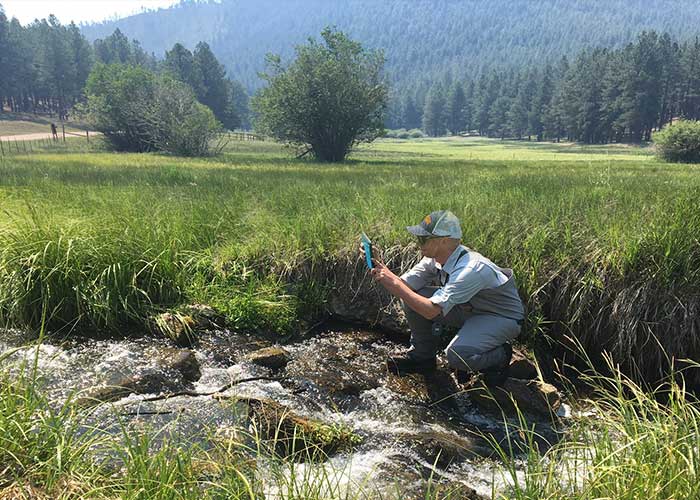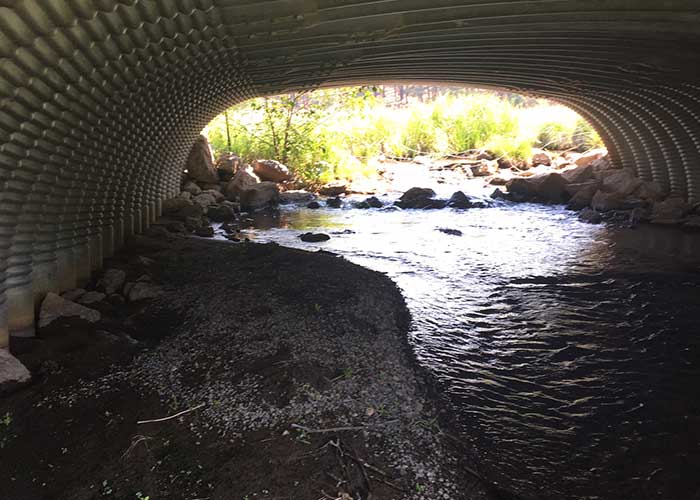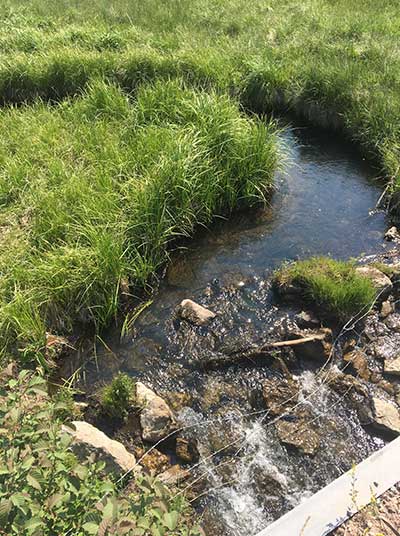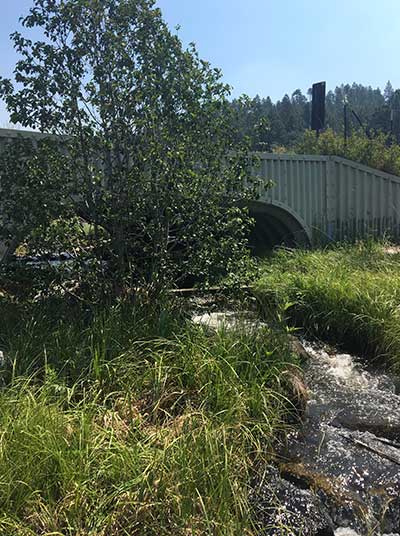Assessing Aquatic and Riparian Habitat Connectivity in Northern New Mexico
Following is a selected project highlight from the Share with Wildlife mission to assist all New Mexico wildlife in need, no matter what species.
Assessing Aquatic and Riparian Habitat Connectivity in Northern New Mexico

Data collection using digital datasheet (Ginny Seamster).
The extent to which habitat (i.e., the areas on a landscape that a given animal uses to get the food, water, and shelter it needs) is connected and animals are able to move from one area to another to get what they need to survive and reproduce is often a crucial indicator of how well individual organisms and broader populations will fare in the long term. Fragmentation of habitat is often a significant factor leading to the decline, and sometimes the total loss, of species, making connectivity of habitats important for species that live on land (i.e., terrestrial) or in the water (i.e., aquatic)

Example surveyed culvert (Ginny Seamster).
In 2020, Defenders of Wildlife and Cascade Conservation, LLC have been using funds from the Share with Wildlife program to develop survey techniques and test them on Santa Fe National Forest lands. These surveys will help determine whether certain man-made structures (i.e., culverts) are impacting the connectivity of habitats for several Species of Greatest Conservation Need (SGCN) that depend on streams and/or the riparian areas along streams for their survival.
Cascade Conservation, LLC convened a team of Geospatial Information System (GIS) and field survey experts to develop and test a new digital datasheet that allows for user-friendly data collection on mobile devices in the field. The datasheet walks the user through the collection of a variety of quantitative and qualitative assessments of the condition of a focal culvert and the associated aquatic and riparian habitats. It includes a basic assessment of water quality as well as measurements of the culvert and an assessment of habitat quality for particular SGCN.

Riparian habitat upstream of surveyed culvert (Ginny Seamster).

Habitat downstream of surveyed culvert (Ginny Seamster).
The datasheet can be customized to include other species of interest for different parts of the state. For the pilot surveys on the Santa Fe national Forest, the focal species included: boreal chorus frog; New Mexico meadow jumping mouse; northern leopard frog; Rio Grande chub; and Rio Grande sucker. It also includes a non-SGCN, the Rio Grande cutthroat trout.
Final project results will be forthcoming by the end of 2020, but the team identified several culverts on the Santa Fe National Forest that could benefit from maintenance (e.g., sediment removal) or potentially modifications to enhance aquatic or terrestrial habitat connectivity for SGCN. More information on the datasheet and preliminary results can be viewed in a webinar recorded by Defenders of Wildlife in October, 2020.
Learn more about the non-profit Share with Wildlife program of the New Mexico Department of Game and Fish, supported exclusively by donations.
Legal Disclaimer:
EIN Presswire provides this news content "as is" without warranty of any kind. We do not accept any responsibility or liability for the accuracy, content, images, videos, licenses, completeness, legality, or reliability of the information contained in this article. If you have any complaints or copyright issues related to this article, kindly contact the author above.
